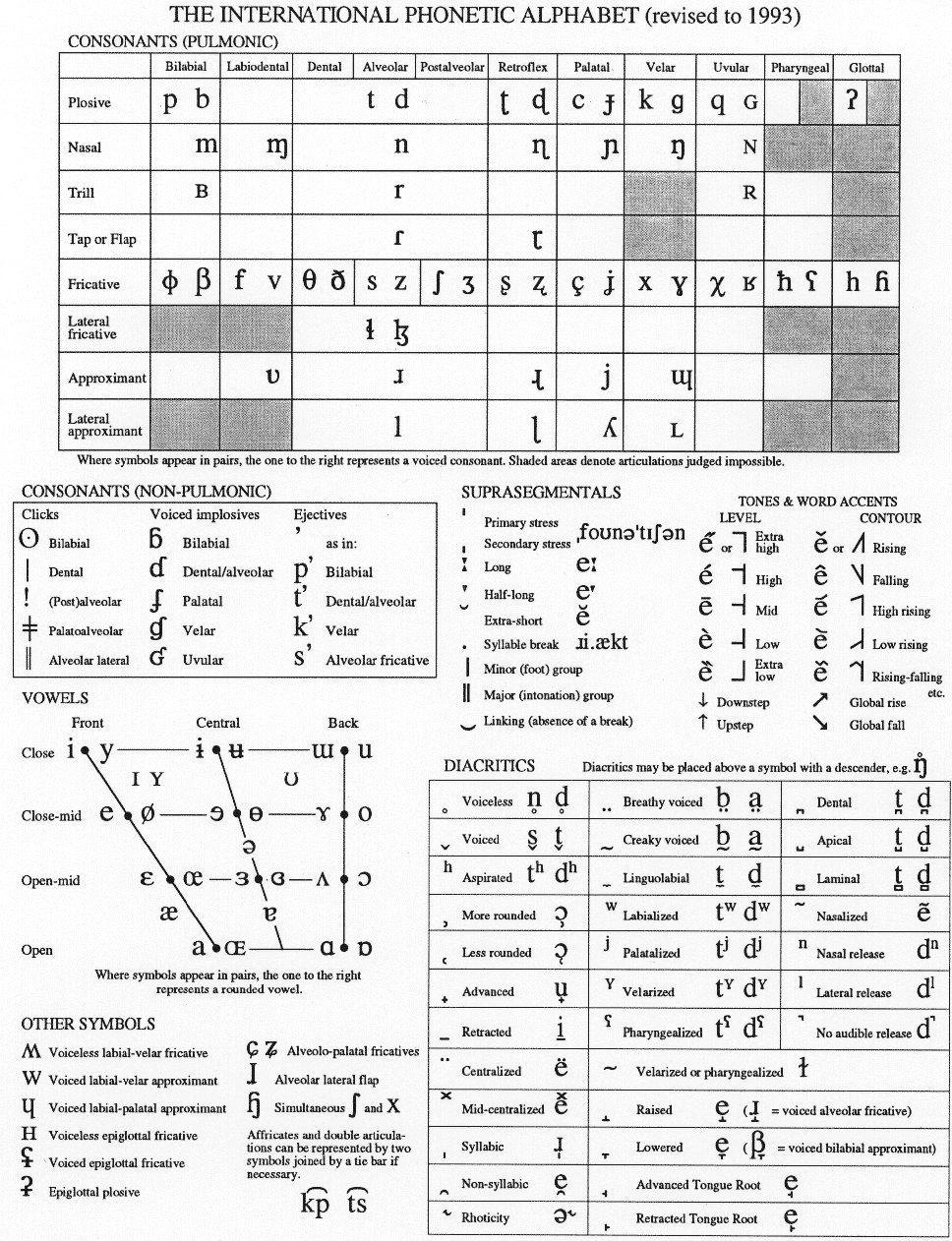
International Phonetic Alphabet
The International Phonetic Alphabet is a standardized set of symbols that represent the pronunciations that occur in most languages. The symbols are organized systematically based on the physical attributes of articulation. Below is a table from the official site of the International Phonetic Association:

Additional Symbols
In addition to the symbols in the above IPA table, there are several more that Chinese linguists often use to transcribe sounds in the Wu dialect.
Aveolo-palatal consonants occur very frequently in Chinese, but they are not in the main IPA table. The aveolo-palatal consonants are denoted by adding to those symbols in the aveolar column an additional "knot" tail. The position of the tongue for the aveolo-palatal pronunciations is in fact, as the name suggests, between the aveolar and the palatal positions. (In Chinese phonetics surveys, this position of articulation is described as "tongue surface, forward part.")
Two aveolo-palatal symbols are already in the appendix of the IPA: /ɕ/ and /ʑ/. One is not in the chart at all: /ȵ/.
The vowel chart in the official IPA and those used by Chinese linguists are generally in close correspondence, but four vowel symbols are not in the IPA. They are pronounced using the tip of the tongue, positioned very near the roof of the mouth.
The two frontal vowels are (unrounded and rounded):
/ɿ/ and /ʮ/.
The two slightly backwards vowels are (unrounded and rounded): /ʅ/
and /ʯ/.
On to: Phonological Systems |
Project Details